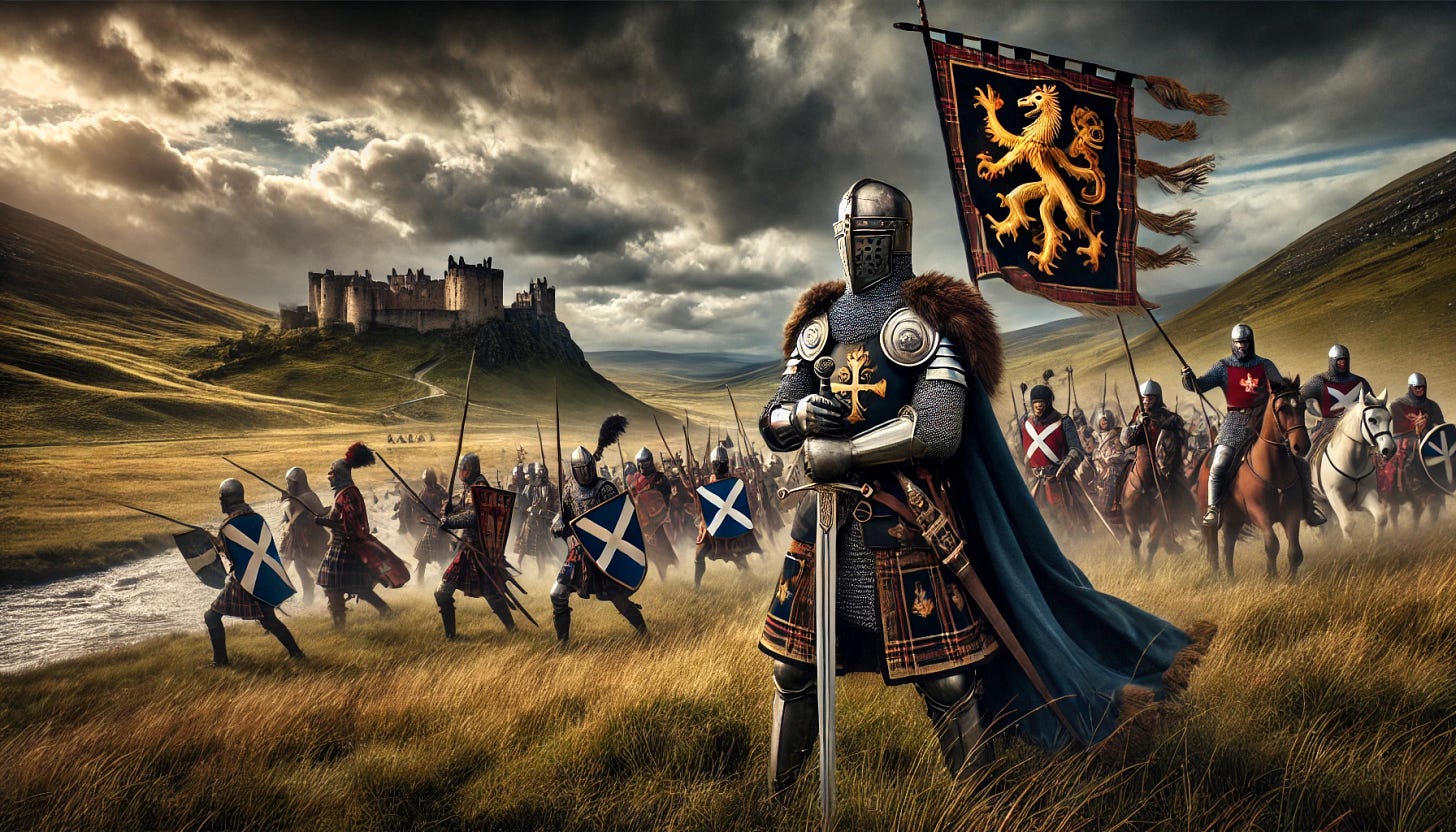The Douglases’ Tumultuous Family and Clan Legacy
Few families in history embody the contradictions of chivalry and chaos as vividly as the Douglases of Scotland. From their storied battlefields to their internecine rivalries, the Douglases left a legacy of unparalleled courage and ambition, tempered by betrayal and internal discord. This post delves into the clan's rise, its role in shaping the Scottish Borders, and the tumult that both forged and fractured its legacy.
The Rise of the Douglases: From Guardians to Icons
The Douglases first rose to prominence during the Wars of Scottish Independence in the late 13th and early 14th centuries. Their patriarch, Sir William Douglas, supported William Wallace and Robert the Bruce, cementing the family’s reputation as staunch defenders of Scottish sovereignty. Bruce’s trusted lieutenant, James Douglas, later known as “The Good Sir James,” became one of Scotland’s most celebrated knights. His daring raids into English territories earned him a legendary status as both a warrior and a tactician.
Sir James's exploits during the early 14th century—culminating in his tragic attempt to carry Bruce’s heart to the Holy Land—epitomized the ideals of chivalry. However, this era of valor and loyalty would soon give way to internal discord and unchecked ambition.
The Flower of Chivalry: Betrayal in the Borders
The contradictions within the clan’s legacy are perhaps best illustrated by William Douglas, the "Knight of Liddesdale." Revered as the “Flower of Chivalry,” his early career was marked by remarkable feats of arms. He regained lost Scottish territories and became a hero of the Borders. However, his ambition led to darker deeds. Jealous of Sir Alexander Ramsay’s growing influence, Douglas murdered him in cold blood, imprisoning him in Hermitage Castle's infamous dungeon, where he starved to death.
This act of treachery tarnished Douglas’s reputation. Though he succeeded in consolidating power as the Sheriff of Teviotdale, his betrayal became a defining stain on his legacy. Ultimately, he met his end at the hands of his godson and kinsman, William, Lord Douglas, in what many believe was an act of retribution.
A Legacy of Rivalry and Retribution
The Douglases’ internal rivalries were as fierce as their conflicts with the English. The murder of the Knight of Liddesdale was not an isolated incident but part of a broader pattern of power struggles within the clan. Their ambition to dominate Scottish politics often pitted them against rivals within their own ranks, resulting in cycles of betrayal, revenge, and bloodshed.
Despite these internal conflicts, the Douglases remained pivotal in Scotland’s wars against England. The Battle of Otterburn (1388) highlighted the clan’s valor. James, 2nd Earl of Douglas, led the Scots to a famous victory over Henry Percy, or "Hotspur," only to die on the battlefield. His death, shrouded in legend, inspired ballads and tales that celebrated his courage even as they lamented the loss of a leader whose ambition often outpaced his alliances.
The Douglas Power Struggle: A Fall from Grace
By the 15th century, the Douglases were at the height of their power. They controlled vast swathes of land, and their influence rivaled that of the Scottish monarchy. However, this power also made them a target. King James II perceived the Douglases as a threat to his reign and sought to diminish their authority.
The relationship between the crown and the Douglases reached a breaking point in 1452 when James II murdered William, 8th Earl of Douglas, at Stirling Castle. This brazen act of regicide, coupled with the king’s subsequent campaign against the family, marked the beginning of the clan's decline. The Douglases were forced into exile, and their estates were confiscated, ending their dominance over the Borders.
The Douglases’ Enduring Legacy
Despite their fall from power, the Douglases’ legacy endures. Their story, a blend of chivalric ideals and unrestrained ambition, reflects the turbulent nature of medieval Scotland. They were warriors who defended their homeland with unyielding courage but also architects of their own undoing through treachery and ambition.
The Douglases left a cultural imprint that extends beyond history books. Their deeds are immortalized in Scottish ballads, such as the famous "The Battle of Otterburn," and in the ruins of castles like Hermitage and Tantallon, which stand as reminders of their former glory. The symbols of their clan—the bloody heart and the star—remain iconic emblems of Scotland’s feudal past.
Conclusion
The Douglases exemplified the duality of medieval chivalry and chaos. Their achievements on the battlefield were matched only by their intrigues off it, making them one of the most fascinating and complex families in Scottish history. Their legacy is a testament to the human condition, where greatness and flaw, valor and vice, often coexist.
The story of the Douglases is a powerful reminder that history is rarely simple. It is a tapestry woven with threads of courage and conflict, ambition and downfall—a tale as riveting today as it was centuries ago.





